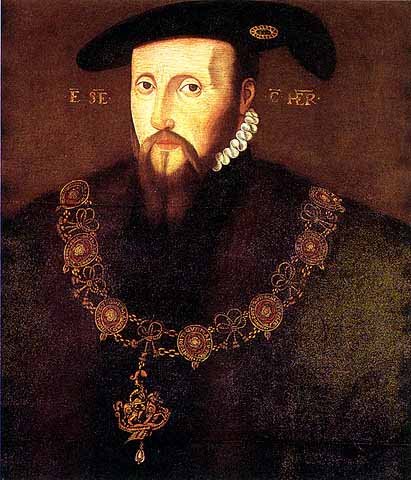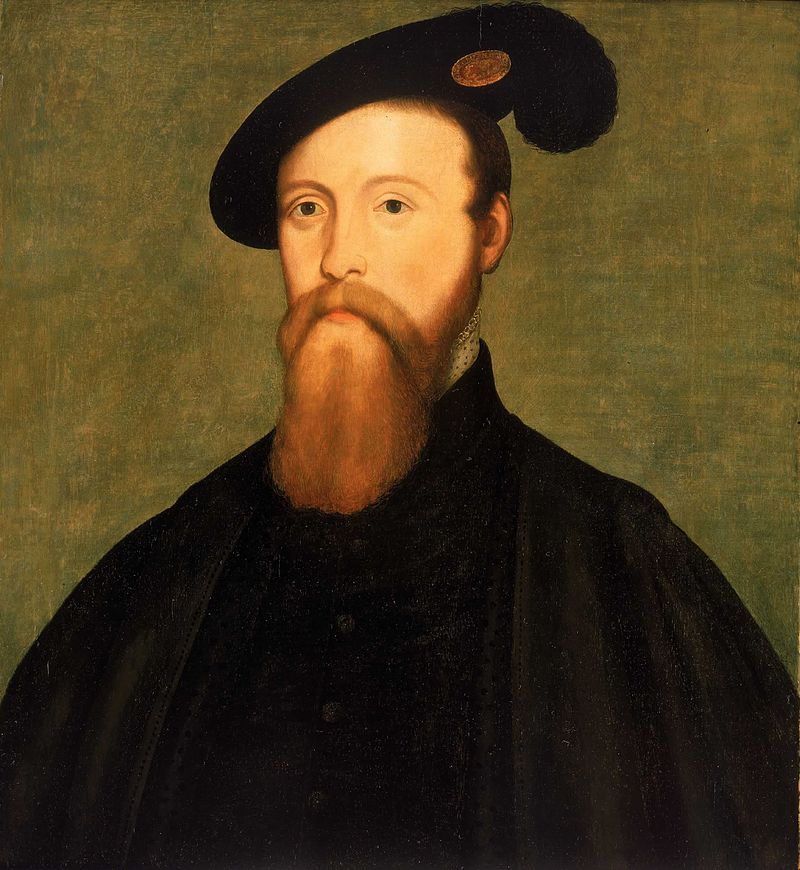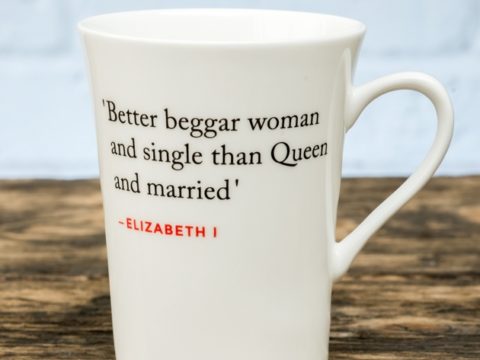A Man of Much Wit
by Elizabeth Norton
Chapter 1: The Plot
On the night of 16 January 1549 the quiet at Westminster Palace was broken by the frantic barking of a dog. Woken from his slumber, Sir Michael Stanhope, who slept in the king’s chamber, rushed to the door. There, he found the king’s little dog, which usually slept in his bedroom, stone dead. Crying ‘ Help! Murder!’ Stanhope roused the court. Whoever had killed the dog had fled in the commotion, but there were those that had seen the king’s uncle, Thomas Seymour, lurking in the palace that night. The king’s own guards could testify that he had scattered their watch with various errands to run on his behalf. The gates to the Tower suddenly gaped wide for Thomas Seymour.
It had been the last action of a desperate man, but the planned abduction of the king had been botched. Spending the rest of that sleepless night at his London residence of Seymour Place, Thomas could have reflected on how things had gone so badly wrong. During the last years of Henry VIII’s reign, he had been feted as the brother of Queen Jane Seymour and, thus, uncle to Edward, Prince of Wales. His elder brother, Edward, had forced him onto the Privy Council as Henry VIII lay dying, in spite of the old king’s protestations. In January 1547, as the uncle of the new king and in favour with his brother, the Lord Protector, the future must have looked good for Thomas Seymour.

Yet, Edward Seymour, the new Duke of Somerset, had no intention of sharing the honours heaped upon him. Thwarted in his attempts to marry first Princess Mary and, then, the thirteen year old Princess Elizabeth, Thomas secretly married Henry VIII’s widow, Catherine Parr. It was this that finally broke the already damaged relationship between the two Seymour brothers, since Somerset had previously denied Thomas permission for the match. Nonetheless, Thomas soon took up residence with Catherine first at Chelsea and then at Hanworth, where he became more intimately acquainted with her stepdaughter, Princess Elizabeth.
Thomas was witty and handsome, but impetuous and dangerously unstable, capable of erupting into a jealous rage at the slightest provocation. Soon, he was visiting the girl in her bedchamber, appearing ‘ barelegged’ as she lay unchaperoned in her bed, before advancing to tickle her amongst the pillows. In the early summer of 1548 Catherine caught the pair embracing and sent Elizabeth away, but it had already been noted by members of the girl’s household that ‘ she seemed to be well pleased’ with Thomas’s attentions. With Catherine’s death in childbed in September 1548 he was, once again, England’s most eligible bachelor.

The death of his wife removed any restraining hand on Seymour’s conduct. Only a few weeks after the death, he dined at the house of Catherine’s friends, the Tyrwhitts, at Mortlake, who had witnessed some of his conduct with Elizabeth. Over dinner, he raised the subject of the two princesses’ marriages, declaring ‘ I put case, I had married one of them, were it not surety for the king? Am not I made by the king? Have not I all that I have by the king? Am not I most bounded to serve him truly? ’
Sir Robert Tyrwhitt who, like his wife, secretly hated his guest, was unconvinced, declaring that whoever married one of the princesses without consent, ‘ let him be stronger than they [the Council] be, if they catch hold of him they will set him up ’. Yet, Thomas had already decided to marry again and Princess Elizabeth was the chosen bride.




